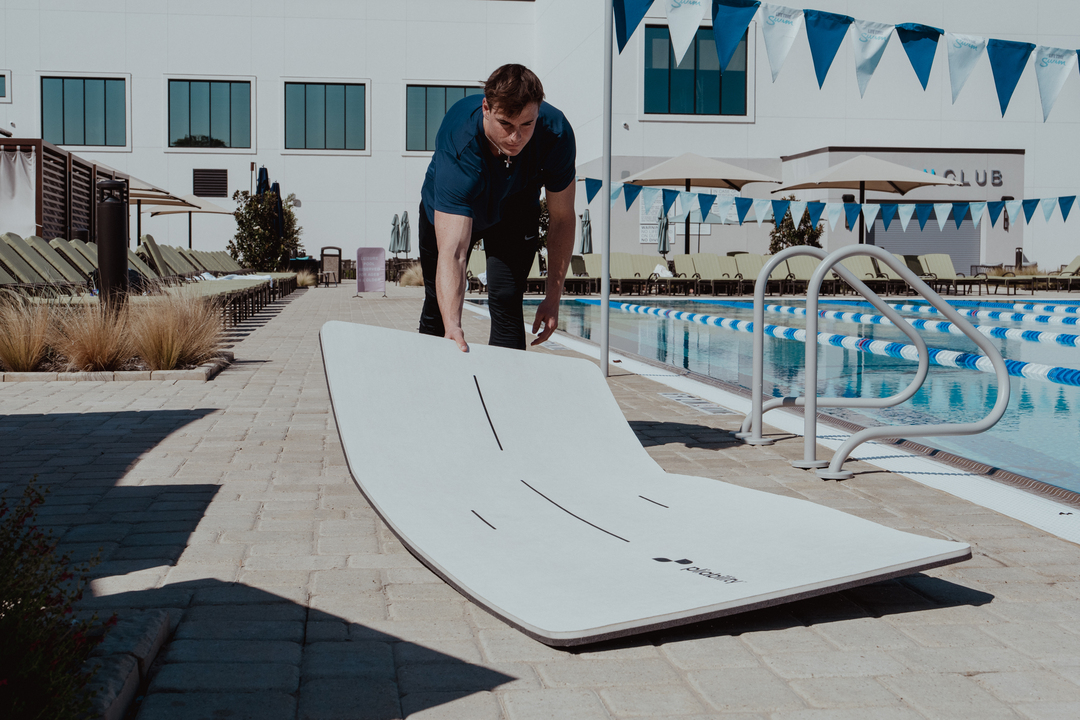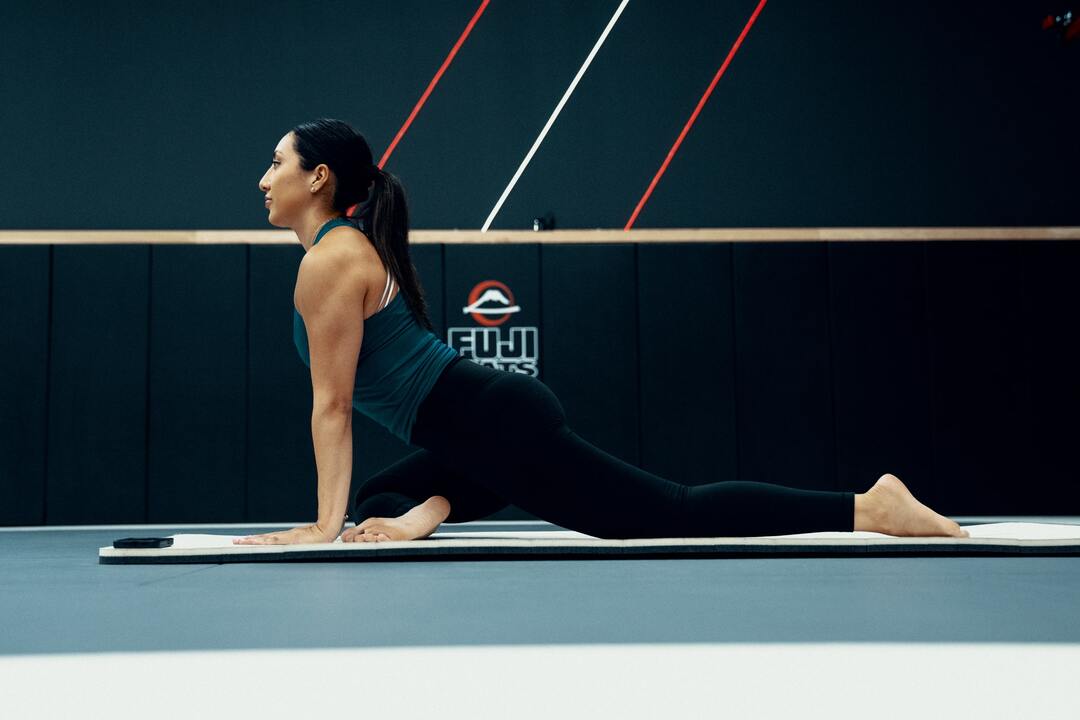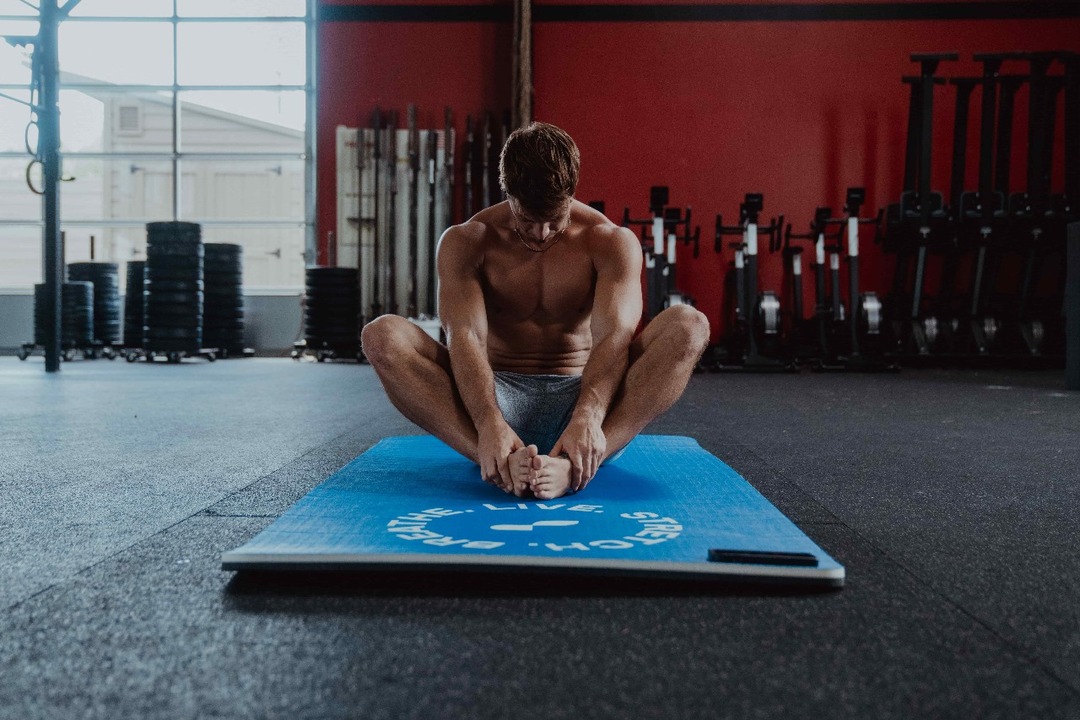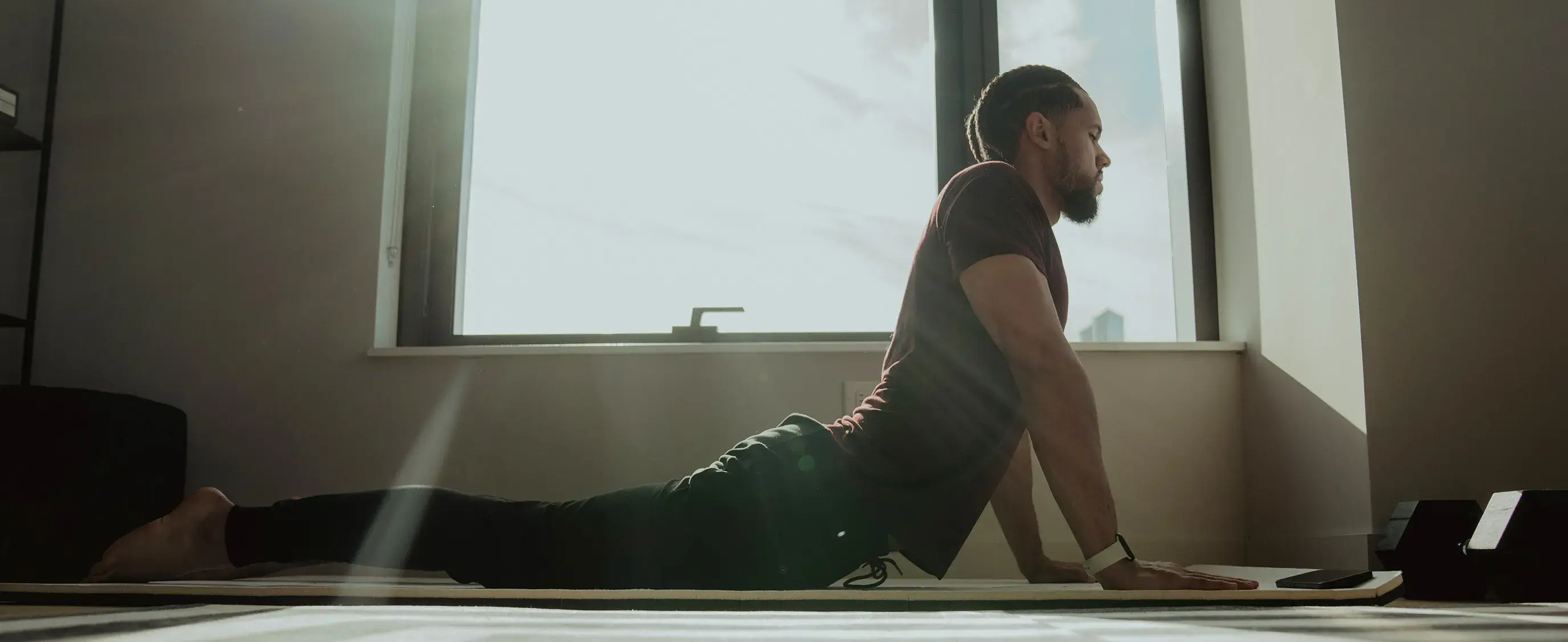You land awkwardly, hear a sharp pop, and your knee swells within an hour — now what? How do you know if you tore your ACL? In Recovery techniques, telling a simple sprain from an ACL rupture changes immediate care, imaging choices, and your rehab plan. Just like learning how to recover quickly from a workout helps your muscles heal efficiently, understanding ACL recovery helps you prevent setbacks and rebuild strength safely. This article breaks down common ACL tear symptoms like pain, swelling, knee instability, and the feeling of giving way, explains doctor exams and MRI, and outlines surgery, physical therapy, range of motion goals, and realistic recovery timelines so you can quickly tell if your knee injury is an ACL tear and map a confident return to normal movement and activity.
To help you act fast and recover with confidence, Pliability's mobility app offers guided self-checks, easy-to-follow rehab progressions, and symptom and strength tracking so you can confirm whether it is an ACL injury and follow a clear path back to regular activity.
Summary
- About 70% of ACL injuries are non-contact, meaning faulty movement patterns during cutting, deceleration, or landing, rather than direct blows, drive most tears in sports like soccer and basketball.
- Roughly 200,000 ACL injuries occur each year in the United States, a volume that strains surgical and rehab services and makes early recognition and triage a public health priority.
- Approximately 50% of ACL injuries happen between the ages of 15 and 25, concentrating the functional and social costs of time lost from sport and school in adolescent and young adult athletes.
- Targeted prevention programs that prioritize posterior chain strength, progressive single-leg control, and eccentric deceleration can halve ACL incidence, with a 2025 study reporting a 50% reduction in soccer players.
- Recovery and return-to-play follow measurable timelines, with disciplined non-surgical rehab typically spanning 3 to 6 months, surgical rehab moving through staged phases, and unrestricted pivoting sport often delayed until 9 to 12 months while meeting objective gates such as a limb symmetry index greater than 90%.
- Fragmented, paper-based rehab and sporadic clinic visits increase missed deficits and re-injury risk, while prevention programs show clear economic benefits: every dollar invested in ACL prevention for high school soccer players saves more than seven dollars in treatment costs.
- Pliability's mobility app addresses this by providing guided self-checks, automated progression criteria, and remote movement screening so clinicians and athletes can objectively track symptoms, strength, and milestone readiness throughout prevention and the 3 to 12-month rehab window.
What is an ACL Tear?

The anterior cruciate ligament, or ACL, is the central stabilizer in your knee that prevents the shin bone from sliding too far forward under the thigh bone and helps control rotational stability; when the ACL is torn, the knee can feel unstable, give way, and lose reliable control for cutting and pivoting.
An ACL tear can be a partial rupture, where some fibers remain intact, or a complete rupture, where the ligament is split through and the knee’s mechanical restraint is lost until reconstructed or compensated for by surrounding tissues.
What Exactly Changes When the ACL is Damaged?
A damaged ACL reduces the knee’s ability to resist forward translation and rotation, so movements that rely on rapid deceleration, sharp cuts, or single-leg landings often produce a sense of unstable wobble or sudden giving way.
Clinical Signs and Long-Term Risk of Knee Instability
Clinically, this shows as positive laxity on manual tests, acute pain and swelling, and a persistent difficulty trusting the knee during sport-specific tasks; over months, the lack of control increases the risk to the meniscus and articular cartilage because abnormal motion loads those structures.
How are ACL Tears Classified, and Where Do They Usually Occur?
Clinicians grade ACL injuries to communicate severity: Grade 1 is a stretched but intact ligament, Grade 2 is a partial tear with looseness, and Grade 3 is a complete rupture. Tears most commonly occur in the middle of the ligament rather than at its attachment to bone, and surgical reconstruction typically replaces the torn tissue with a graft when the knee remains symptomatic or when the patient wants to return to pivoting sports.
Who Tends to Suffer ACL Injuries, and How Often Does This Happen?
ACL tears affect athletes and active people of all ages, but they are most common in sports that demand planting, cutting, and rapid direction changes, such as soccer, basketball, skiing, and football. About 70% of ACL injuries are non-contact, meaning they often occur from body mechanics and movement patterns rather than direct blows.
The clinical impact is significant: approximately 200,000 ACL injuries occur annually in the United States, a volume that strains surgical and rehab services and explains why prevention and return-to-sport pathways get so much attention.
What Do Recovery and Treatment Usually Demand?
When we followed a group of competitive athletes through a six-month post-op rehabilitation protocol, the pattern became clear: recovery is as much about restoring neuromuscular control and proprioception as it is about rebuilding strength.
Staged Rehab for Correcting Faulty Mechanics
This means a staged, criteria-driven program with progressive loading, single-leg stability work, and movement retraining to correct faulty landing mechanics. Without that, athletes often feel frustrated by slow gains and turn toward experimental shortcuts because the status quo offers limited non-surgical options for complete ruptures.
Why the Familiar Approach to Rehab Starts to Fail, and What Bridges the Gap
Most patients manage recovery through patchwork programs, home exercises, and sporadic clinic visits, because that system is familiar and feels doable. As demands on the knee increase, though, this fragmentation reveals a hidden cost: inconsistent progression, missed movement deficits, and a higher risk of re-injury when athletes return too soon.
Centralizing Protocols and Remote Monitoring
Platforms like Pliability address that gap by centralizing individualized protocols, automating progression criteria, and enabling remote movement screening so that clinicians can monitor adherence, spot risky patterns earlier, and maintain progression objectives without adding administrative burden.
A Quick Analogy to Make the Mechanics Stick
Think of the ACL as a braided cable inside a hinge; when a few strands fray, the hinge still works, but once the cable snaps, the hinge swings loose, and the rest of the mechanism wears out faster if you keep using it the same way. That tension between wanting a faster solution and needing disciplined, measurable rehab is where the real choices happen.
But the way people actually tear their ACLs is more revealing than the symptoms alone, and that’s what we’ll look at next.
Related Reading
- Why is a Recovery Period Between Bouts of Exercise Important?
- Signs of Injury
- Hip and Knee Pain
- Why Do the Insides of My Legs Hurt When I Run
- Deadlift Back Pain
- Signs of Overtraining Cycling
- Deloading Week
- Injuries in Weightlifting
- How to Prevent MCL Injuries
How Do You Tear Your ACL?
-min.jpg)
They most often fail when loading patterns combine knee-inward collapse, rotation, and a sudden forward pull on the shin during deceleration, cutting, or landing, and those forces overwhelm the ligament before muscles and technique can compensate. Risk rises when sport demands, movement habits, and strength imbalances line up against you, rather than the ligament changing on its own.
How Do Movement Patterns Create that Destructive Load?
In movement-screening work with athletes, the repeating mechanical fault is apparent: a stiff, short-step landing with limited hip and ankle motion channels ground reaction forces through the knee. If the hip drops, the thigh rotates inward, and the knee tracks toward the midline, the ACL experiences a large rotational and anterior pull.
This combination, especially when the knee is near extension, spikes strain because the quads and hamstrings are unable to absorb or redirect the force smoothly.
Which Sports and Scenarios Raise the Odds?
Certain activities magnify those risky mechanics because they require repeated single-leg landings and quick redirections. Sports like volleyball and gymnastics, which involve frequent jumping and landing, as well as cutting sports that demand rapid deceleration, are associated with a higher incidence of ACL injuries. You have frequent opportunities for the exact type of misalignment that can hurt the ACL.
How Do Strength, Technique, and Fatigue Change the Equation?
If the hamstrings and hip abductors are weaker than the quadriceps, the knee loses a key braking system, so an otherwise low-energy movement becomes risky. Fatigue tightens that imbalance:
- After 20 to 30 minutes of play
- Movement patterns shift
- Reaction time drops
- Landing mechanics degrade
This turns near-misses into injuries. That’s why targeted neuromuscular training that stresses single-leg control, hip stability, and soft landings actually changes real-world failure modes.
Most teams use generic warm-ups and sporadic drills because they are familiar and straightforward. That works at first, but as training loads and competition intensity increase, those stopgaps miss individual deficits and let risky mechanics persist. Platforms like Pliability:
- Centralize targeted prevention protocols
- Automate progression criteria
- Provide objective movement screening so clinicians and coaches catch deficits early.
- Keep training specific to each athlete’s failure points.
When Does Contact Cause a Tear Instead of a Non-Contact Mechanism?
A direct hit to the outside or front of a planted knee delivers force in a single instant, which can disrupt the ACL's stability and lead to injury. That scenario is typically less about chronic technique faults and more about an acute overload that the ligament cannot tolerate, often resulting in combined injuries to nearby structures.
What Does This Mean for People Deciding Between Conservative Care and Surgery?
The emotional pattern is familiar: athletes and parents feel anxious after a pop or instability; they want to protect long-term joint health but also keep playing. When function is preserved and imaging is unclear, many prefer a conservative pathway that focuses on progressive strength and movement retraining to rebuild trust in the knee. In contrast, others accept reconstruction to restore mechanical restraint for pivoting sports.
Each route has predictable trade-offs, so clarifying goals and measuring progress objectively helps families make a confident choice. That certainty feels like the obvious next step, but distinguishing a bruise from an absolute tear is a different, far more unsettling question.
How Do You Know if You Tore Your ACL
You usually know pretty quickly when the ACL is torn: an abrupt, often audible event is followed by pain, rapid swelling, and a sudden loss of trust in the knee that makes walking or pivoting unsafe. These symptoms cluster and escalate in the first 24 to 72 hours, so early recognition is key to getting the proper care.
Did You Hear a Loud Popping Sound?
After treating athletes and active adults across seasons, the first clear pattern I saw was the pop, a single, sharp noise at the moment of injury that many describe as startling and final. That pop is not just noise; it signals a sudden structural failure that the brain registers immediately, which is why bystanders or teammates often remember the sound as vividly as the person who was injured.
Why Does the Knee Feel Unstable or Give Out?
Instability shows up as a sudden giving way or recurrent buckling when you try to step, cut, or turn, and that loss of mechanical control is the symptom that most changes daily life. In practice, patients who report repeated episodes of the knee sliding or collapsing do not trust the joint, stop participating in sports, and often switch to crutches or a cane because the knee cannot reliably support load during twisting motions.
How Bad Will the Swelling Get, and When Does It Appear?
Expect swelling quickly, often within hours, then peaking in the first day as blood and joint fluid collect inside the knee capsule; the joint can look and feel puffy, warm, and tight. That rapid effusion limits motion and increases pain, which is why many people find bending the knee or straightening the leg difficult almost immediately after the injury.
How Intense and Variable Is the Pain?
Pain varies widely, from a sharp, intense burst at the moment of injury to a dull, aching complaint driven by swelling and tissue irritation later on. From working with high school and recreational athletes, I learned that pain alone is a poor predictor of severity. Still, when pain prevents weight bearing or forces someone to limp, it reliably signals a need for prompt assessment.
Why Does Range of Motion Disappear So Fast?
Loss of range follows the swelling and pain, and within the first 24 to 48 hours, patients often cannot fully bend or straighten the knee because the joint capsule is distended and the muscles reflexively tighten. Practically, that means walking becomes uneven, stairs feel impossible, and simple transfers require assistance until the acute response settles.
Who Gets Hurt Most and Why That Matters Here?
An estimated 50% of ACL injuries occur in people between the ages of 15 and 25, which explains why the symptom cluster we just described is so typical in athletes and teens pushing high-speed, cutting movements. That age concentration matters because the social and functional costs of the injury—ranging from missed seasons to school interruptions—compound quickly.
What Scale of the Problem Should Clinicians Keep in Mind?
Approximately 200,000 ACL injuries occur each year in the United States, making early recognition of the classic symptom pattern not just an academic concern but a vital public health task that affects clinics, teams, and families every season.
The Limit of RICE and Generic Exercises
Most people handle the first few days by resting, icing, and starting generic home exercises because that approach is familiar and feels doable. That familiar route, however, fragments care: without objective movement tracking and a consistent progression plan, swelling and instability can linger, and decision points get muddled.
Platforms like Pliability provide centralized, criteria-based rehab pathways and remote movement screening so clinicians and coaches can spot persistent instability and adjust progression before setbacks multiply.
It’s exhausting when a single noisy moment leaves you uncertain how to walk, work, or play for weeks; that uncertainty is the emotional core of this injury, and it changes how people relate to their bodies in real time. That next question is the one that keeps everyone awake at night.
Related Reading
- How to Prevent Peroneal Tendonitis
- Why Do My Knees Hurt After Squats
- How to Prevent Arthritis in Hands
- How to Prevent Achilles Tear
- Ankle Sprain Prevention
- How to Prevent Knee Injuries
- Shoulder Impingement Exercises to Avoid
- Ankle Mobility for Runners
- How to Avoid Rotator Cuff Injury
How Are ACL Tears Prevented and Treated?

Prevention combines targeted strength, mobility, balance, and movement retraining to shift how your body absorbs load; treatment starts conservatively with guided rehabilitation and uses surgery only when mechanical stability or your sport goals demand it. You can reduce risk and recover reliably if you follow a staged, measurable plan that blends exercise specificity with objective return-to-play criteria.
What Exact Exercises Should You Do, and How Should They Progress?
When we designed in-season programs for club teams over a 12-week block, three patterns produced the most significant change: prioritized posterior-chain loading, progressive single-leg control, and eccentric deceleration capacity.
Progressive Strength and Movement Retraining Stages
- Start with bilateral strength to build a base —e.g., slow squats and Romanian deadlifts twice weekly for 4 to 6 weeks.
- Add eccentric hamstring work, such as Nordic lowers and single-leg Romanian deadlifts, to develop braking capacity.
- Move from double-leg to single-leg strength drills when you can hold balance for 30 seconds with no wobble, then layer sport-specific demands like single-leg hops and controlled lateral bounds.
- Aim for strength symmetry, measured objectively, before high-speed drills.
How Do You Train Flexibility and Tissue Tolerance Without Losing Power?
If mobility is a bottleneck, focus on joint-specific measures, not generic stretching. Mobilize the ankle with dynamic dorsiflexion drills and calf-loaded stretches to free landing mechanics, and use hip hinge variations, including band-resisted deadlifts, to restore posterior chain length under load.
Loaded End-Range Work vs. Passive Stretching
Use short daily sessions of loaded end-range work, three to five minutes per joint, rather than long passive stretches, because adding load while lengthening teaches tissues to accept force in functional positions. Foam rolling and soft-tissue work can reduce soreness, but the priority is restoring motion under load, so technique improves when you actually play.
What Does Balance and Proprioception Training Really Look Like?
This problem appears across recreational and competitive programs: athletes do single-leg stands, then assume they are protected. Balance training must progress from static to reactive to sport-like perturbations.
Progressive Single-Leg Stability and Reactive Drills
Start with static single-leg holds, progress to eyes-closed or soft-surface holds. Add reactive catches, perturbations from a partner, and jump-landing sequences with unplanned direction changes. Include at least two sessions per week and measure improvement with repeatable tests such as time-to-stabilize after a hop.
When Should You Consider Non-Surgical Care Versus Reconstruction?
Pattern-based judgment works best here: choose non-surgical management when the knee is stable with controlled function, when swelling and pain respond to rehab, and when the athlete accepts modified activity. Opt for reconstruction when instability persists despite progressive rehab, when combined injuries threaten the meniscus or cartilage, or when the athlete plans to return to pivoting sports at a high level.
Non-surgical pathways typically require a disciplined 3 to 6 month rehabilitation program with clear performance milestones; if functional goals are unmet, consider surgery after that window rather than immediately.
What Do the Surgical Options and Recovery Timelines Look Like in Practice?
The critical trade-off is mechanical certainty now versus a more extended rehab with earlier conservative attempts. Graft choices include patellar tendon, hamstring tendon, quadriceps tendon, and allograft, each with pros and cons in graft harvest morbidity, initial fixation strength, and re-rupture risk; discuss these specifically with your surgeon relative to your sport and age.
Postoperative ACL Rehab
Postoperative phases follow a predictable arc: the immediate 0 to 2 week phase targets swelling control and full passive extension, weeks 2 to 6 emphasize regained motion and early quadriceps activation, months 3 to 6 build concentric and eccentric strength plus controlled plyometrics, and after month 6, you shift to sport-specific power and decision-making drills with objective testing.
Clearance for unrestricted pivoting sport typically requires meeting strength and hop symmetry thresholds and often takes 9-12 months for high-risk athletes.
How Do Clinicians Decide When an Athlete Is Ready to Return?
The failure mode here is subjective optimism. Use objective gates, not calendar days: limb symmetry index greater than 90 percent on strength and hop tests, movement quality under fatigue, and successful completion of unplanned cutting drills at full speed. Include psychological readiness measures too, because trust in the knee predicts how aggressively someone will load it when play resumes.
What Are the Hidden Costs of Informal Rehab Routines, and Is There a Better Way?
Most teams manage rehab with paper handouts and occasional clinic check-ins, because it is familiar and requires no new tools. As caseloads grow, that routine fragments care, misses subtle movement deficits, and delays adjustments when athletes plateau. Platforms like Pliability centralize individualized protocols, automate progression criteria, and provide remote movement screening so clinicians can flag risky mechanics early and keep progression objective without adding administrative burden.
How Do I Reduce the Risk of Re-Injury Once I’m Back?
This is a constraint-based problem: strength and technique work well during controlled practice, but as competition intensity rises, fatigue and decision complexity expose deficits. Maintain ongoing single-leg strength maintenance, periodic balance and reactive training two times monthly, and a short pre-game neuromuscular warm-up sequence focused on soft landings and hip control. Treat these as insurance, not optional extras.
Resolving Anxiety and Mechanical Risk
After working with adolescent athletes across a competitive season, the pattern became clear: patients want a non-surgical first approach and rapid return, but skipping structured rehab causes frustration and increases re-injury odds; committing to measurable progression resolves both the emotional anxiety and the mechanical risk within months.
It is relieving to know that prevention pays in more than one way, as economic analyses show that every dollar invested in ACL injury prevention for high school soccer players can save more than seven dollars in treatment costs. That practical shift may seem like tinkering under the hood, but it ultimately changes the entire system.
Improve Your Flexibility with Our Mobility App Today | Get 7 Days for Free on Any Platform
I know how frustrating it is when pain and limited motion slowly push you off the field, so try a practical, measurable way to rebuild movement that fits your day. Platforms like Pliability centralize custom mobility work and body-scanning to end the guessing and keep progression clear.
Start with a free 7-day trial and see what users report—80% experienced improved flexibility within four weeks, and 90% noticed reduced muscle soreness after using the app.
Related Reading
- Glute Activation Exercises
- Eccentric Quadriceps Exercises
- How to Squat Without Knee Pain
- Injury Prevention for Runners
- How to Start Working Out Again After Knee Injury
- Signs of Overtraining Running
- Scapular Mobility Exercises
- SI Joint Mobility Exercises
- Running Injury Prevention Exercises








